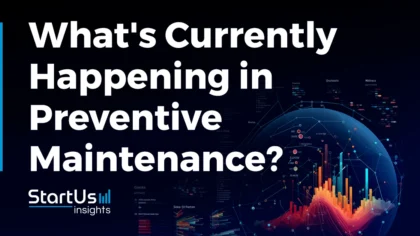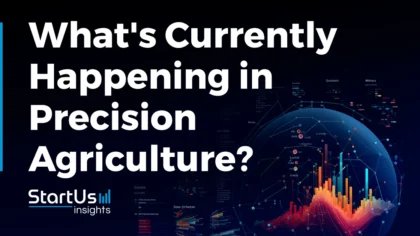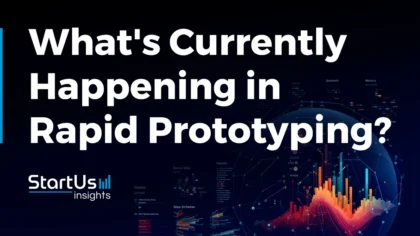Accelerate Productivity in 2025
Reignite Growth Despite the Global Slowdown
Are you and your company headed in the correct direction in this age of precise navigation? Finding the quickest route to your next meeting is not the only use for the global navigation satellite system (GNSS) sector. It is increasingly serving as the unseen framework for a wide range of industries, including transportation and food. Let’s examine the most recent advancements influencing the GNSS market and the reasons that companies and IT professionals should always be up to speed. From the latest industry events to important partnerships in the field, this GNSS news brief for February 2024 provides a comprehensive snapshot of what is happening in the global GNSS sector today.
Key Takeaways
- Surge in GNSS Adoption: Industries like transportation are increasingly relying on GNSS for accuracy, as seen in Siemens Mobility’s deployment of geofencing in the UK.
- Addressing GNSS Security Concerns: The GNSS signal disruption in Finnish airspace highlighted vulnerabilities in satellite navigation systems.
- GNSS and IoT Convergence: The integration of GNSS in IoT devices marks a trend towards reliable location-based services. Cavli Wireless’s CQM220 Cellular IoT Module at CES 2024 exemplifies this evolution.
- Strategic Partnerships: Collaborations like the one between GMV, Astroscale, and ESA for the Galileo system are pivotal for GNSS advancement.
- Industry-Specific GNSS Initiatives: The automotive sector is leveraging GNSS for enhanced navigation and steps towards autonomous driving.
- Technological Innovations and Challenges: Innovations like the AntaRx GNSS Smart Antenna are revolutionizing machine automation applications.
- Business Implications and Future Outlook: Businesses must prioritize GNSS security to prevent operational disruptions and financial losses. Integrating GNSS technology in products will also enhance location-based services
How We Researched and Where this Data is from
This article is fueled by insights from the StartUs Insights Discovery Platform, a comprehensive resource tracking more than 3.7 million startups and scaleups globally. Our platform monitors over 20,000 technology trends, covering 100K feeds across various industries.
For this piece, we’ve leveraged the platform to analyze 1000 of the most recent and impactful news evolving around GNSS. Further, our platform allows you to dig deeper into GNSS and investigate other topics based on your preferences. Interested in exploring the latest news, developments, innovations, and breakthroughs relevant to your business? Book a demo with us today and discover the full potential of our platform for your strategic needs.
What’s Currently Happening in GNSS?
Increasing Accuracy in All Sectors
The increase in GNSS-related activity in recent months indicates a noticeable emphasis on accuracy and dependability. The fact that Siemens Mobility used Tended’s creative solutions to deploy geofencing technology in the UK is evidence of the industry’s rising demand for precision in the transportation domain. In a similar vein, u-blox and Nordian brought the PointPerfect GNSS Correction Service to Brazil. This represents the globalization of high-precision services to a market ready for technological disruption.
GNSS Security Issues Addressed
A clear reminder of the weaknesses in satellite navigation systems was provided by the GNSS signal disruption that occurred on New Year’s Eve across Finnish airspace. Since then, the industry is shifting towards a security-first approach. For example, the recommendations from the European Aviation Safety Agency (EASA) and the International Air Transport Association (IATA) to combat GNSS spoofing and jamming threats. Businesses that depend on GNSS are at a crucial point, which emphasizes the necessity of making investments in preventative measures.
GNSS and IoT Meet
One increasingly popular trend in the Internet of Things (IoT) space is the incorporation of GNSS technology into devices. The industry is moving toward a future where location-based services are more commonplace and dependable than ever. Cavli Wireless’ announcement at CES 2024 of the CQM220 Cellular IoT Module with integrated GNSS compatibility further underlines this move.
Strategic Alliances
The advancement of GNSS is largely dependent on partnerships. The Galileo Signal-in-Space Advanced Satellite Collision Avoidance system collaboration between GMV and Astroscale and the European Space Agency (ESA) is just one instance of how strategic partnerships are driving innovation in the sector. Along with exchanging knowledge, these collaborations aim to strengthen the GNSS technology ecosystem.
Aerospace, Automotive, and Agriculture Take the Initiative
In order to improve navigation and get closer to the autonomous driving frontier, the car industry is utilizing GNSS. Thanks to GNSS, precision farming is becoming possible in the agricultural sector. This allows farmers to increase yields while reducing input requirements. The adoption of high-precision GNSS receivers for improved satellite navigation and positioning is occurring in the aerospace sector, not too far behind.
Technological Advancements: A Double-Edged Sword
The creation of smart antennas, such as the AntaRx GNSS Smart Antenna from Septentrio, is transforming machine automation applications. Global coverage and dependability are being improved for users by GNSS modules that enable several satellite navigation systems.
Cybersecurity Assumes a Leading Role
In order to protect GNSS signals against cyberattacks, technological advancements in anti-jamming and spoofing are essential. For companies that rely on precise location, however, the non-isotropic character of tropospheric delays and the constant threat of signal jamming and spoofing continue to provide formidable obstacles.
Prospective Outlook: Business Consequences
- To protect against signal disruptions, businesses need to give GNSS security a priority right away. There might be serious operational interruptions and financial losses if these dangers are ignored.
- Enhancing location-based services will need product integration of GNSS technology in the medium term.
- Businesses may be at a competitive disadvantage if they don’t take advantage of these developments.
Retaining a competitive edge will require being up to date on the most recent technology developments. In summary, technical advancements and strategic alliances are driving the GNSS industry’s fast expansion. The concerns, especially in signal security, cannot be disregarded, even though the improvements present a plethora of benefits for numerous industries. To fully use GNSS technology and protect their systems from future attacks, business executives need to take decisive action.

Staying informed is key to navigating its complexities and capitalizing on opportunities in the GNSS sector. To keep your business ahead of the curve, use our platform to find recent developments and technologies in GNSS. Discovery Platform provides a condensed yet thorough overview of the latest trends and advancements for guiding your investment decisions and identifying effective collaboration opportunities.








